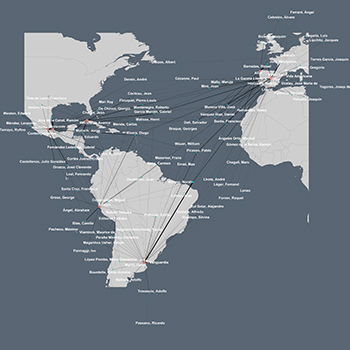Transnational Network Formation in the Medium of Cultural Magazines
The Case of Spanish-language ‘revistas culturales’ of the Modernismo and Avant-garde Periods (1891-1936)
DOI:
https://doi.org/10.25517/jhnr.v6i1.90Keywords:
cultural magazines, bimodal networks, social network analysis, network formation, transatlantic exchangeAbstract
In this research article, we introduce a methodology we developed in order to collect and analyse data from 42 Spanish-language magazines which were published between 1891 and 1936. The example of the imagery found in these magazines will be used here to illustrate some of the research findings which came out of the project “Blinded for peer review”. In this project, the focus was both on network formation and on the transnational exchanges established by the cultural magazines under scrutiny. Analysis is performed by establishing bimodal networks that enable the examination of transatlantic transfers between Europe and Hispanic America. Beyond the question of transfers, major insights from the project are presented, such as the observation that in the cultural field taste dominates and limits the number of possible connections between contributors and magazines. The limitations of the chosen methodology lie in the explanatory power of centrality measures applied to bimodal networks which provide questionable results with respect to relevant research questions. As a remedy, we propose the use of a ‘cultural transfer rate’ which can easily be calculated from the data established within the project. While the research project had its focus on the cultural exchanges facilitated by Spanish-language magazines, further research avenues which can be explored in the future on the basis of the data provided by the project are also discussed. The first of these avenues consists in transforming the data at hand into one-mode social networks, which would enable the analysis of the social dimensions relevant to the material, especially with regard to groups of artists, and the synergies created within them. The second avenue describes how blockmodeling as an analytic technique can be implemented by the aggregation of further data, thus enabling the differentiation of roles within cultural fields, such as editors, editorial staff, or independent artists.

Downloads
Published
How to Cite
Issue
Section
License
A Creative Commons Attribution-NoDerivatives 4.0 (CC BY-ND 4.0) license applies to all contents published in JHNR. While articles published on JHNR can be copied by anyone for noncommercial purposes if proper credit is given, all materials are published under an open-access license with authors retaining full and permanent ownership of their work. For details please consult the Open Access and Copyright Notice.

